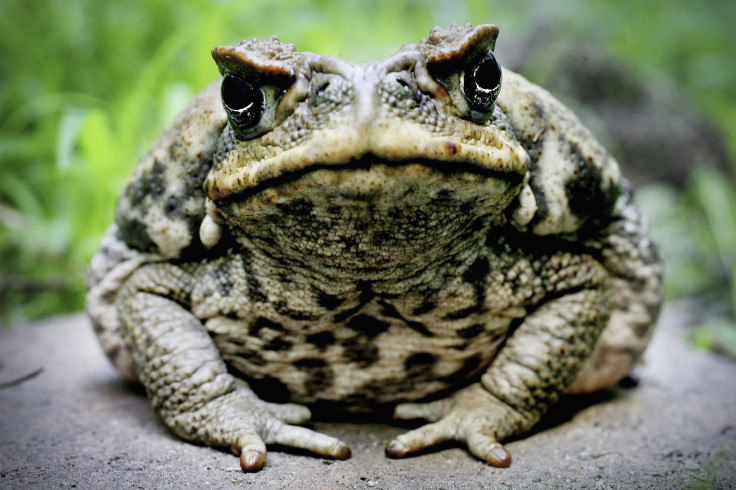'Please Refrain From Licking' DMT Toads, National Park Service Pleads With The Public
KEY POINTS
- The NPS shared a picture of the Sonoran desert toad in the Facebook post
- Prominent glands on these toads secrete a powerful toxin with a hallucinogen
- The species is threatened in New Mexico partly due to drug use of the toad venom
A Facebook post by the National Park Service (NPS) shared on Oct. 31 is asking people to "refrain from licking" bizarre creatures they come across in the forest. The post included a haunting picture of a toad with its eyes glowing in the pitch-black environment.
"As we say with most things you come across in a national park, whether it be a banana slug, an unfamiliar mushroom, or a large toad with glowing eyes in the dead of night, please refrain from licking. Thank you," the NPS post read.
Well that’s toad-ally terrifying….🐸Hey there! Here is the “ribbiting” late night content no one asked for. Yet here we are. The Sonoran desert toad (Bufo alvarius), also known as the Colorado river...
The toad in the picture is the Sonoran desert toad (Incilius alvarius, formerly Bufo alvarius), which is also known as the Colorado river toad.
"These toads have prominent parotoid glands that secrete a potent toxin. It can make you sick if you handle the frog or get the poison in your mouth," NPS wrote in the post.
Sonoran Desert toads are one of the largest toad species in the country, measuring about seven inches in length. While most of their lives are spent hibernating underground, these amphibians are nocturnally active between May and September. The toad's call is a "weak, low-pitched toot, lasting less than a second," NPS described in the post.
The toxin secreted by the toads is a powerful hallucinogenic compound known as 5-methoxy-N, N-dimethyltryptamine (5-MeO-DMT) which is classified as an illegal Schedule I controlled substance.
The chemical is an analog of DMT, a psychedelic drug that is often called the "spirit molecule" or "God molecule."
While the NPS post does not explain the reason behind asking people to refrain from licking these toads, the venom of these creatures is said to be used for recreational purposes. Prominent figures like Chelsea Handler and the U.S. president's son, Hunter Biden have acknowledged using the toad venom in the past.
Joe Rogan, the former "Fear Factor" host who now has one of the most popular podcasts in the world, has spoken about DMT on his show "The Joe Rogan Experience" quite often.
Furthermore, Mike Tyson admitted to trying the venom and even keeps Sonoran desert toads on his ranch in Desert Hot Springs, California, HuffPost reported.
Despite its popularity, however, the drug has its downsides as it can physically incapacitate a person for about 30 minutes, and also cause anxiety, as per the outlet.
"It's such an intense experience that, in most cases, doing it at a party isn't safe," Alan K. Davis, who is part of the Psychedelic Research Unit at Johns Hopkins University, reportedly said.
The amphibian is found in the region spanning from southern Arizona to the southwestmost corner of New Mexico, as well as across the border into northwestern Mexico, according to Gizmodo.
While the animal was previously known to inhabit a small area of southeastern California, the species is now believed to be locally extinct in the region. California Department of Fish and Wildlife puts the last verified record of a Sonoran Desert toad in the area to be in 1955.
Sadly, the amphibian is now labeled threatened in New Mexico partly due to "collectors that want to use the animal for drug use," according to the state's Department of Fish and Wildlife.
Recently, a new tiny frog species with blue armpits has been discovered in Costa Rica.
"We as country boys, we know sounds," naturalist Donald Valera Soto said, as per the news release. "I listened to this little frog, and it was almost impossible to find it, it was so well camouflaged."
"I was really happy when I found it because I had been trying to find the frog that was making that unusual call for six months after I first heard it," Soto recalled.

© Copyright IBTimes 2025. All rights reserved.





















